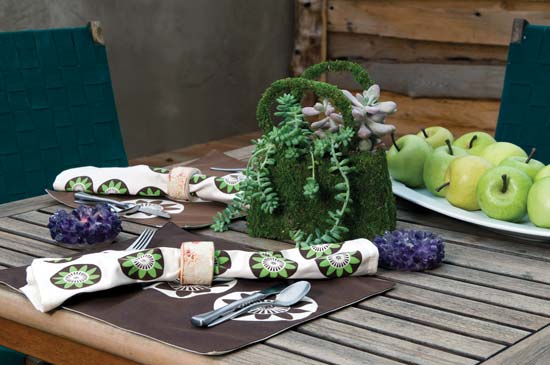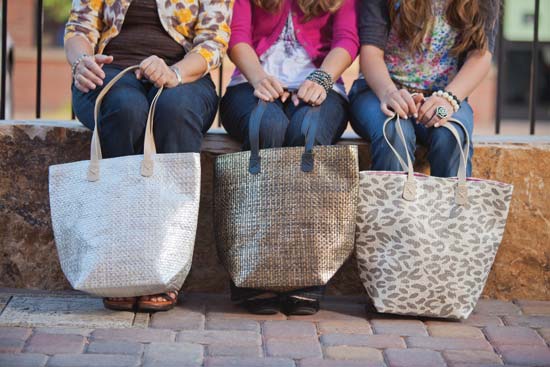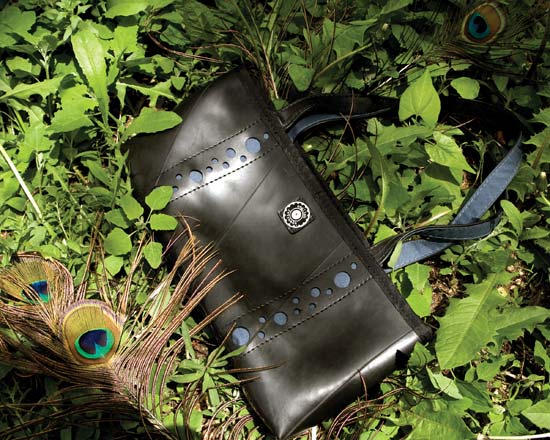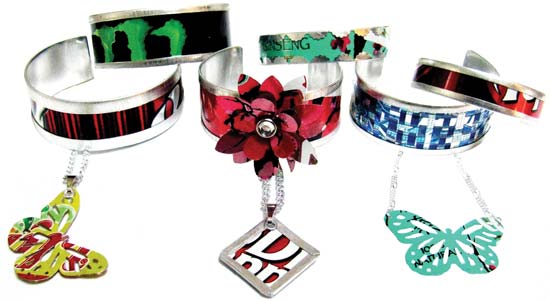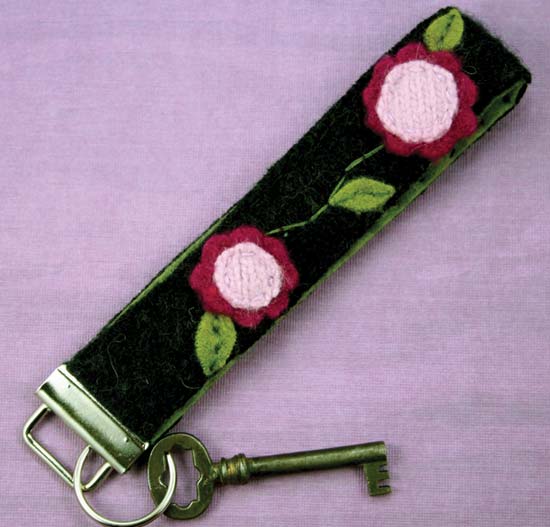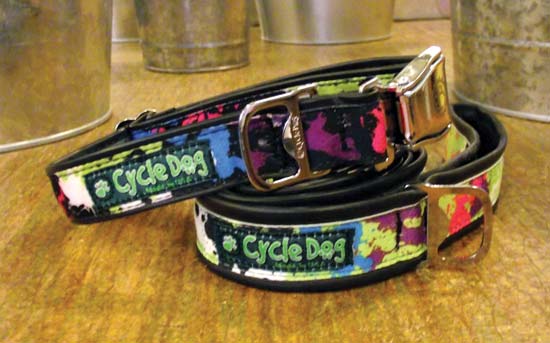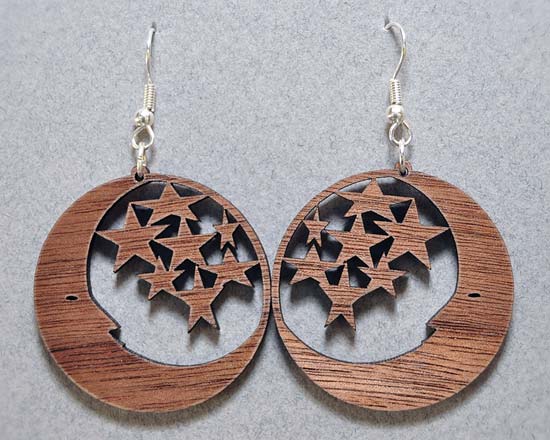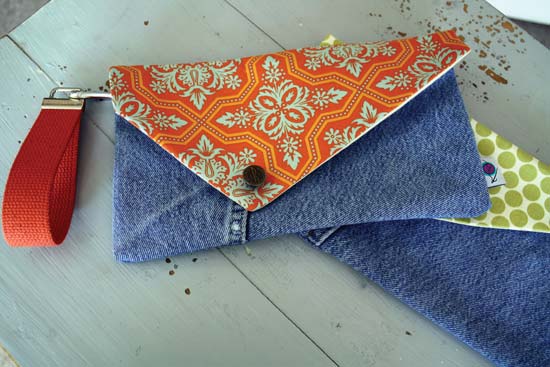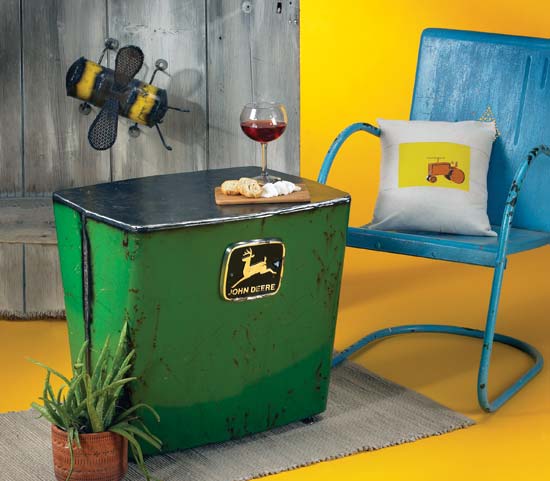From Farm to Table: Recycling, Repurposing… Breathing New Life into Old
Lifting the Haze
Even as gifts made from rescued materials become more popular, confusion still remains on what the terminology means. Here, a primer to help you inform your customers:
Reclaimed - salvaged refuse or waste that is returned to a suitable condition for use
Repurposed - unwanted items that are used in new ways
Recycled - waste that is reprocessed and remanufactured into more of the same material
Concern for the environment combined with a demand for special gifts has created the perfect storm for transforming refuse into revenue.
Reduce, reuse, recycle. During the height of the green marketing trend, there was a deluge of buzzwords like these, and it seems as though the message has seeped in. Today, most consumers look for ways to incorporate environmentally friendly practices into everyday lives whether that means carrying reusable grocery bags or opting for stainless-steel water bottles over plastic.
In response, retailers are warming to products that both they and their customers can feel good about. In a recent study, market research firm Mintel found that 54 percent of consumers have noted a flurry of new green products at their favorite stores.
“Everybody’s awareness is rising,” says Ilene Shaw, founder of Shaw & Co. Productions, and curator of the SustainAbility display and seminars at the New York International Gift Fair. “Retailers are not just responding to consumer demand. Just like every other citizen, they are looking for sustainable products because they’re aware of climate change and the necessity for making changes.”
This heightened eco-awareness also comes on the heels of the economic maelstrom, which has made consumers more focused on value. Thanks to unique styling and a built-in narrative, reclaimed, repurposed and recycled gifts appeal to customers on both levels.
Goods with these characteristics are especially important for independent stores as they try to weather an increasingly promotional and price-driven market. “Specialty stores and catalog retailers are getting squeezed by retail below and above them, and they need differentiated product,” says Jim Martin, co-owner of Oshkosh, WI-based Green 3, a sustainable fiber clothing company.
Martin’s wife Sandy launched the brand in 2006 with organic T-shirts and has since expanded into scarves, mittens, hats and gloves made from the scraps gathered from apparel and furniture factories, which are then recycled into usable yarn.
Tidal shifts in attitudes
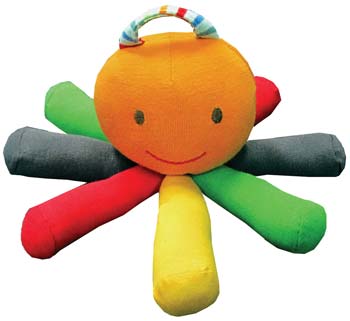 Though the concept behind the company’s products has been a compelling selling point lately, there was a time when retailers had a degree of skepticism. “Some of our biggest customers now didn’t understand the environmental aspect when they first met us,” Martin says. “Both retailers and consumers have become more knowledgeable.”
Though the concept behind the company’s products has been a compelling selling point lately, there was a time when retailers had a degree of skepticism. “Some of our biggest customers now didn’t understand the environmental aspect when they first met us,” Martin says. “Both retailers and consumers have become more knowledgeable.”
Twenty years ago, Rhea Alexander, founder of New York-based DIGS, which offers recycled and repurposed goods from artisans around the world, found it best to keep mum about the company’s ethical practices. “In the beginning, consumers almost frowned on upcycled and recycled goods and thought of it as waste, so we would focus on the beauty of the design and quality of the products,” she says. “As it has become more in the pubic consciousness, we’ve talked about it more.”
Similarly, Heather English, owner of Boulder, CO-based English Retreads, sometimes received a frosty reception for her repurposed goods when she launched a decade ago. “[Awareness] has come a long way. It was hard at first,” she recalls. “I still remember the buyer who quickly turned and left my booth when I told her my bags were made of inner tubes not leather.”
Today, English’s line of handbags and accessories—sourced from materials recovered at local truck stops—has found a loyal following. Men especially connect with the product’s origins so the company is expanding into more guy-friendly areas to complement the brisk sales of its bi-fold wallet. Up next are 13- and 15-inch laptop sleeves, iPad sleeves as well as a shaving kit.
Wendy Robbins, owner of Erlanger, KY-based It’s a Wrap, credits the younger generations with accelerating the winds of change. “People in their 20s and 30s care more about [eco issues] than I did when I was that age,” she notes. “Today’s consumer is more thoughtful and conscientious, and they care where the goods come from.”
In fact, Robbins credits her young staff members with convincing her to give repurposing a try. Until last year, the four-year-old company had been focused on monogrammed goods, but those products have been eclipsed by the success of the brand’s new iPad cases, clutch purses and pillows made from burlap coffee sacks and fabric scraps. With the launch of the repurposed line, the company found its true identity—and a profitable business model. “It was a financially savvy move,” Robbins says. “We lowered our cost of goods, which helps us compete in a market full of Chinese products.”
 Next, It’s a Wrap will add denim items made from used jeans. Through it’s Pants for the Planet promotion, the company will enlist shoppers to drop off their old jeans at It’s a Wrap retailers.
Next, It’s a Wrap will add denim items made from used jeans. Through it’s Pants for the Planet promotion, the company will enlist shoppers to drop off their old jeans at It’s a Wrap retailers.
Jay Gurewitsch, owner of Arcadia, a sustainable and fair trade gift store in New York, credits an avalanche of consumer marketing with educating the masses on this and other ethical product sectors. For example, he says Starbucks’ messaging about fair trade coffee provided him with a way to shine a ray of light on a widely unknown subject. “Customers are sophisticated now, but when I opened my store 11 years ago, no one really knew what fair trade meant,” he says. “So I used to say ‘like Starbucks’ and a little light bulb would go off in their heads.”
Curtailing the marketing bluster
 Even though shoppers at Gurewitsch’s store are typically more seasoned these days, he still avoids showering them with an overtly green message. “I don’t want shopping to be like medicine,” he says. “We don’t take a holier-than-thou approach. Some stores wrap themselves in a green banner. I want people to want the stuff first, and then find out how cool it is.”
Even though shoppers at Gurewitsch’s store are typically more seasoned these days, he still avoids showering them with an overtly green message. “I don’t want shopping to be like medicine,” he says. “We don’t take a holier-than-thou approach. Some stores wrap themselves in a green banner. I want people to want the stuff first, and then find out how cool it is.”
Once it’s clear that the aesthetics of the goods have intrigued shoppers, Gurewitsch and his staff will offer a nugget of information about the products’ unique attributes. From there, they take a cue from the customer. “For some, that’s enough information,” he says. “Only about 30 percent of our customers are interested in hearing the whole story behind the goods.”
While an intriguing anecdote can help move the merchandise, vendors and shop owners agree that a deluge of information can sometimes sink rather than seal a sale. That’s especially true if shoppers have negative opinions about recycled and repurposed goods already. To avoid dampening sales, brands often take a restrained approach to touting their sustainable properties.
“Some people are more hardcore and make their decisions based on whether the product is recycled but I think they’re in the minority,” English says, explaining why she let’s the product speak for itself. “For most, the fact that it’s recycled is a bonus.”
At Europe 2 You, which uses beams from turn-of-the-century European buildings to make reproductions of Old-World items like trivets, cheese and pizza boards, hangtags identify each item as recycled and note a circa date for the materials. The Atlanta-based company also provides additional information to retailers like the significance of the colorful stripes on the grain sacks it uses for totes, aprons and pillows. “The story is intriguing and makes your purchase special,” owner Stacy Borocz reasons.
For those who might appreciate the story behind her products, Lindsay Jo Holmes owner of MapleXO, also uses hangtags to explain that her jewelry and housewares line is made from skateboards. Each tag identifies the board the item came from, where it was sourced and includes the signature of the artisan who made it. “I believe that people these days more than ever are yearning for a connection to the things they buy. They want the story behind it and to know that it’s bigger than they are,” Holmes says. “On the other hand, the words ‘recycled’ and ‘handmade’ can have negative connotations because it makes people think it’s cheap or cheesy.”
Consumers’ clouded perceptions of recycled or repurposed products might be a holdover from the dawn of this market segment when goods were less refined, but Shaw of NYIGF says the items have matured as awareness has increased. “The product quality absolutely is improving,” she says. “It’s not just crafty items. We’re seeing better designed products—manufactured and industrial designed with contemporary styling, which we weren’t seeing before.”
Brooke Schultz, owner of Atlanta’s Re-Inspiration Store, says some of the best rainmakers in her shop—which offers garden art made from metal filing cabinets and oil drums, recycled glass and aluminum jewelry, and license plate art—have come from art festivals. “People are craving something different from mass produced stuff,” she says. “When they find out what the items are made from, it makes their purchase that much cooler.”
Cooling retailer concerns
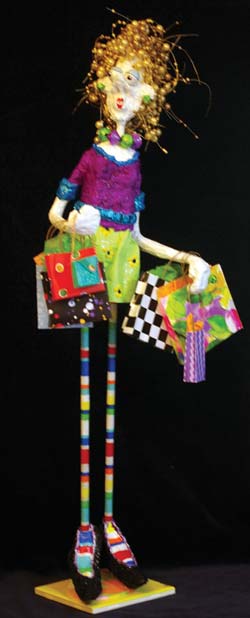 Schultz buys as much as she can from small, local artisans because she likes the one-of-a-kind aspect of their products. “I think that’s part of the appeal. Knowing it’s unique makes it the perfect gift for someone who’s hard to shop for,” she says.
Schultz buys as much as she can from small, local artisans because she likes the one-of-a-kind aspect of their products. “I think that’s part of the appeal. Knowing it’s unique makes it the perfect gift for someone who’s hard to shop for,” she says.
But not every retailer is willing to take on the one-off nature of these gifts, which sometimes have accumulated markings or other evidence of their past lives. For some buyers, variations from item to item add to the charm. While others prefer cookie-cutter perfection when it comes to color, size or patterns.
“Though we don’t put anything out there that looks like an imperfection like a hole or scuff, inner tubes have markings on them like stripes or cool patterns,” says English. “We have accounts that want as many markings as possible because it’s what makes the items interesting. And others want as few as possible.”
Similarly MapleXO gets requests for jewelry that has as many skateboard graphics and scratches on the company’s bangles, hoop earrings, drawer pulls and wall mirrors as possible while others demand a more refined, mass-produced look.
Green 3 is finding that some products create a challenge for certain types of retailers. For instance, each of the company’s 10-panel skirts is unique because they are comprised of a variety of repurposed sweaters. “At specialty stores, consumers can see the full selection and pick the product they want,” Martin says. “In catalogs, typically there’s only one picture so the consumer is going to get something that is different from what was represented. Sometimes customers are confused and sometimes they’re excited about it.” To cool concerns, Green 3 will work within a specific color palette for retailers, creating some consistency from one skirt to the next.
Measuring degrees of impact
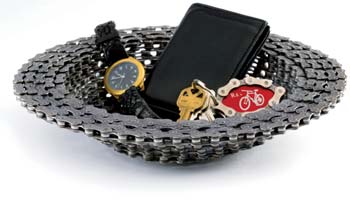 For businesses in this market, the commitment to the environment includes a whirlwind of other concerns beyond the product itself. Each is working to reduce or accommodate for the amount natural resources it takes to make and ship their goods.
For businesses in this market, the commitment to the environment includes a whirlwind of other concerns beyond the product itself. Each is working to reduce or accommodate for the amount natural resources it takes to make and ship their goods.
For example, English Retreads offsets the energy the company uses to clean the inner tubes through a company called Native Energy. While Borocz of Europe 2 You says using old wood instead cutting down new trees outweighs the carbon footprint of shipping products from Europe to the United States. The company is careful to use minimal packaging for the overseas trip. Once here, the goods must be packaged to pass retailers’ drop-test standards so she continues to work with her packaging suppliers to come up with eco materials that will be acceptable for her retail clients.
Alexander also faces challenges when it comes to shipping in an ethical fashion. Though the company often uses recycled and reused boxes along with cornstarch, biodegradable peanuts, she notes it’s not always possible to do so when sourcing from some emerging companies.
Robbins points to these extra concerns, which go above and beyond those that mainstream vendors face, as examples of the dedication it takes to build a business in the eco market. “You have to believe in it because you will sell it better when you believe it,” she says. “Our line didn’t blossom until we discovered our voice, which made it authentic.”
Mouse over images below to view.
